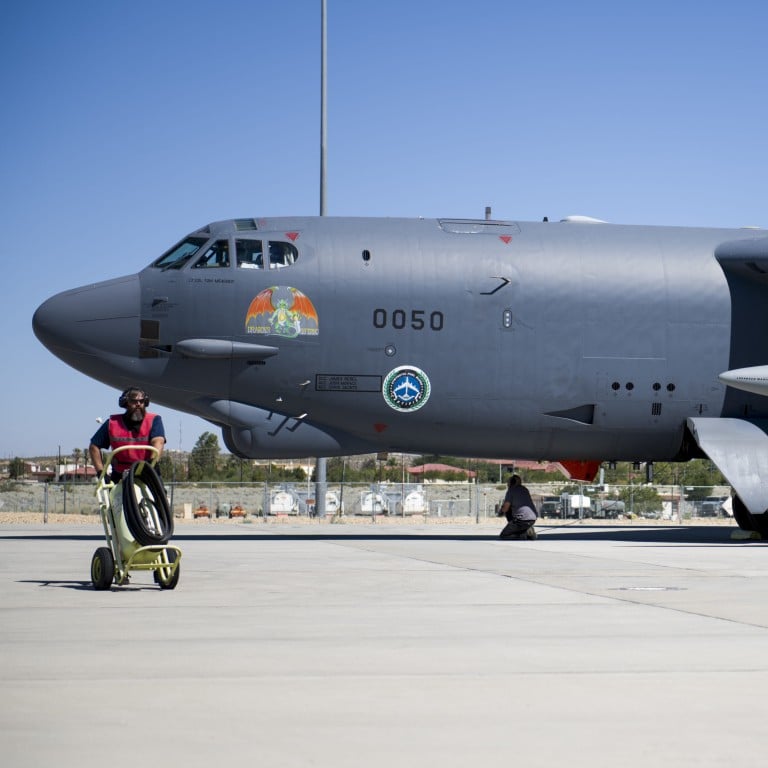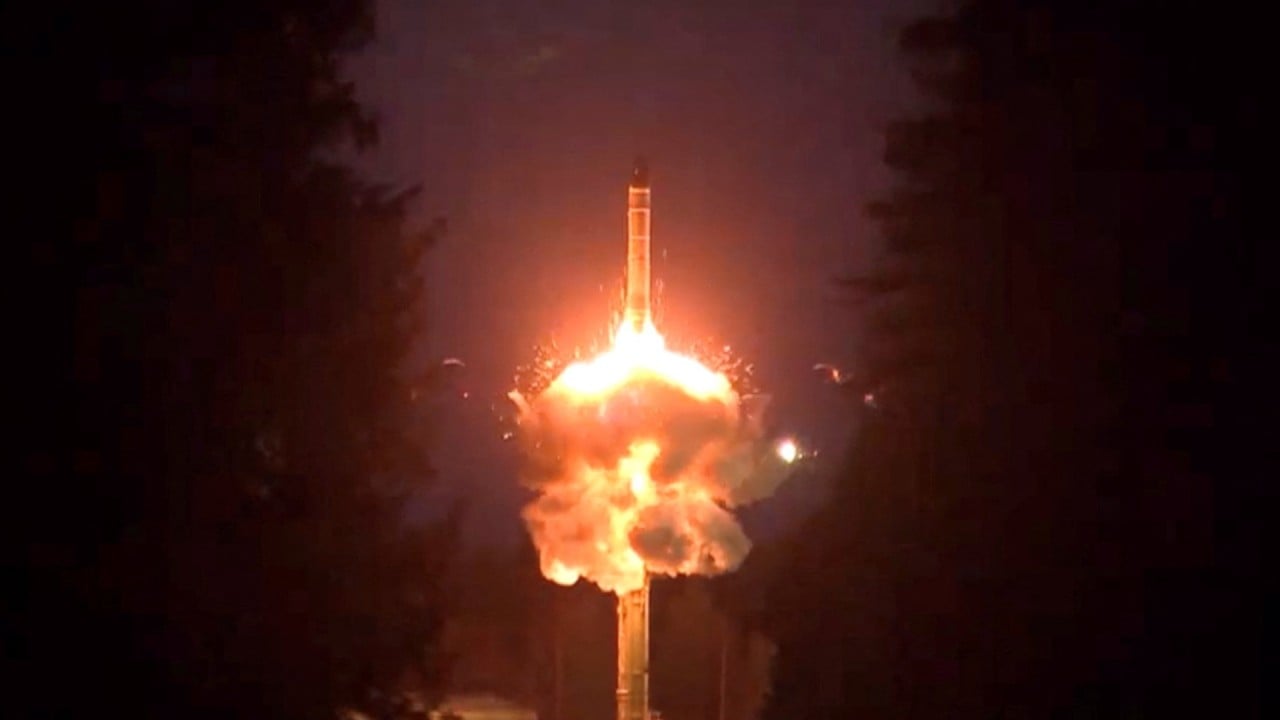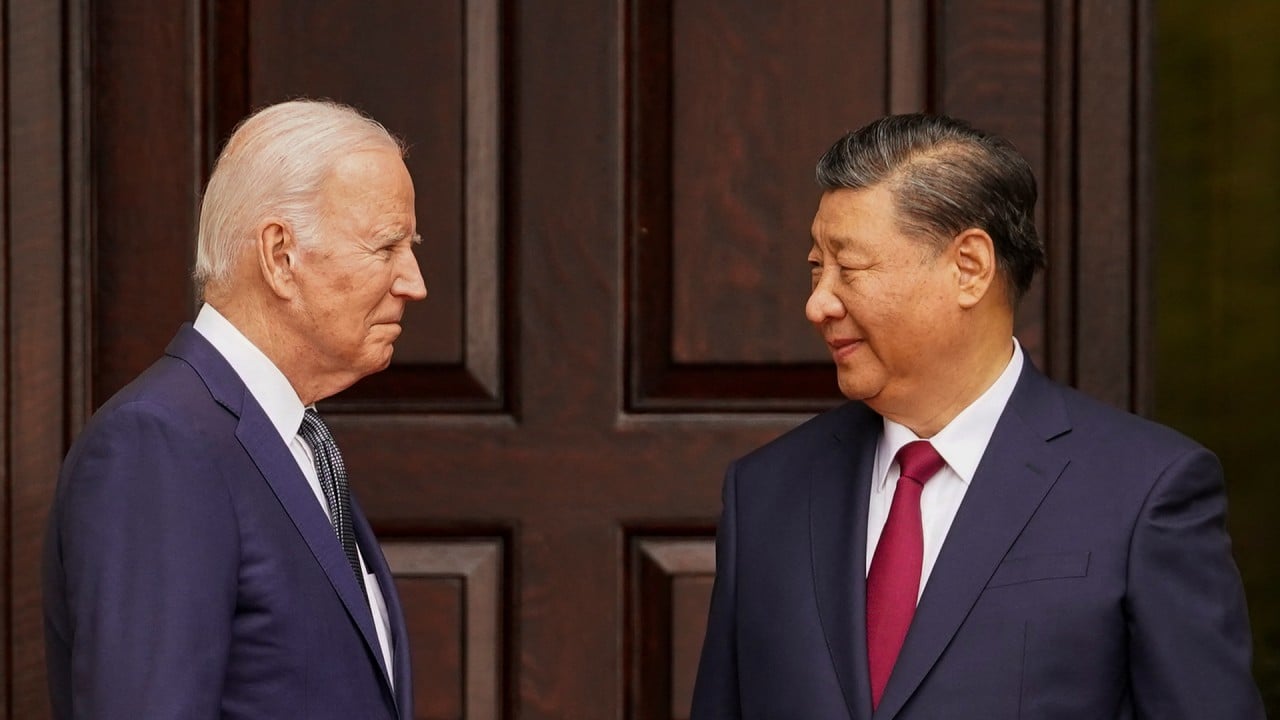
US ‘may be sending strong message’ to China with hypersonic missile test as arms race heats up
- US Air Force says its final test of AGM-183A Air-launched Rapid Response Weapon on Sunday ‘intended to further a range of hypersonic programmes’
- US and China expected to continue developing hypersonic weapons while also improving their defensive capabilities to neutralise these systems
A B-52H Stratofortress strategic bomber from Andersen Air Force Base in Guam took part in the test, firing off the ARRW at the Reagan Test Site, a missile range in the Marshall Islands in the western Pacific.
The US Air Force did not give details about the mission but said in a statement the test launched a full prototype operational hypersonic missile and “focused on the ARRW’s end-to-end performance”.
“While we won’t discuss specific test objectives, this test acquired valuable, unique data and was intended to further a range of hypersonic programmes,” the US Air Force said.
Lockheed Martin’s ARRW is a hypersonic air-to-ground missile with a maximum speed exceeding Mach 5. It is one of the US Air Force’s two main hypersonic weapons programmes, along with the Hypersonic Attack Cruise Missile (HACM).
Lockheed Martin said the company had completed the test programme with “full confidence” and “success” and was ready to “rapidly” deliver the missile to the US Air Force.
Iain Boyd, director of the Centre for National Security Initiatives at the University of Colorado, said the US development of hypersonic weapons showed the determination of its military to develop systems that other nations, such as China and Russia, also considered useful in modern warfare.
“China has conducted many tests of its hypersonic systems that the US is likely aware of …[it] has been studying a wide range of hypersonic weapons, including air-launched systems [and] fielded hypersonic missiles, such as the ground-launched DF-17,” said Boyd.
“Similarly, with [the ARRW] test, the US may be sending a strong message to China to show their progress.”
In a battle between lasers and hypersonic weapons, scientists find less is more
Kostas Tigkos, head of mission systems and intelligence, and Shan Paul, a senior analyst, both of global military intelligence company Janes, said hypersonic weapons would be a “critical capability advantage” because they were harder to detect in time, could reach targets more quickly and could more effectively penetrate current air defences.
“Both China and the US are allocating resources in both developing hypersonic weapons, including materials, propulsion, guidance and targeting, as well as … modernising their detection and defence capabilities,” they said.
“China is … reported [to have] successful tests over the last 3-4 years … By some estimates, China is holding some advantage on hypersonic technology development areas such as materials, guidance, aerodynamics and thermal management.”
Boyd echoed the view that the US and China were likely to continue developing hypersonic weapons with increasing capabilities while also improving their defensive capabilities to “neutralise” these systems.
Hypersonic missiles travel more than five times faster than the speed of sound and approach targets from a much lower angle, making them harder to detect with conventional missile defence systems.
ARRW’s first all-up-round test in December 2022 was called a success by the US Air Force, but the following three tests in March, August and October last year were deemed unsuccessful.
Washington has been competing in recent years with its geopolitical rivals over a hypersonic missile build-up.
China and Russia have led the development of their own hypersonic weapons. Beijing has operated the DF-17 – a medium-range missile system equipped with a hypersonic glide vehicle (HGV) – since 2019.
With a range of 1,600km (994 miles), a Pentagon report in 2022 described DF-17’s “primary purpose” as “striking foreign military bases and fleets in the western Pacific”.
China is also preparing the CH-AS-X-13 – a 3,000km range air-launched ballistic missile version of the DF-21 carried by a H-6K bomber – which is projected to be in service next year.
Russia reportedly used its Kh-47M2 Kinzhal hypersonic air-launched ballistic missiles that are capable of carrying nuclear warheads in its invasion of Ukraine in March 2022 – a month after the outbreak of the war.
Last month, Kyiv claimed Moscow had used its latest Zircon missile – a sea-based hypersonic missile – for the first time and Russian President Vladimir Putin later confirmed it had been used in the war.
North Korea is also developing hypersonic missiles. Its state media on Wednesday said Pyongyang had successfully tested a solid-fuel engine for a new type of intermediate-range hypersonic missile on Monday.
Alarmed by its adversaries’ rapid development and deployment, the Pentagon’s slow progress in developing hypersonic capabilities has seen it come under pressure from the US Congress.
The air force has signalled it is “more committed” to HACM which showed more “reasonably successful” development and ability to integrate with more aircraft.
Developed by Northrop Grumman and RTX subsidiary Raytheon, HACM is an air-breathing missile smaller than ARRW that can be carried by more platforms, such as fighters.
China plans to build a giant rail gun to launch hypersonic planes into space
In the 2025 financial year budget request, the Pentagon allocated US$517 million for HACM, and while no funding was planned for ARRW, US Air Force Secretary Frank Kendall has said the procurement of ARRW could be determined after tests are completed.
Janes’ Tigkos and Paul said that while the ARRW programme seemed to have paused, data from its testing would be applied to investment into other US hypersonic weapons programmes.
“The results and learnings from the ARRW tests will likely be used for other hypersonic programmes currently being pursued,” they said.
“The focus will now shift to HACM which has a smaller form than the ARRW and therefore can be integrated on to smaller aircraft.”



